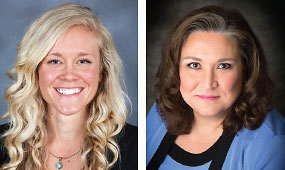COVID-19 and Native Americans, Alaska Natives, Native Hawaiians, Pacific Islanders: A Historical Perspective
Abstract
This is the first in a series of articles on Native Americans, Alaska Natives, Native Hawaiians, and Pacific Islanders.

Social justice is an all-encompassing term that carries so much within the words. The world is full of examples to call upon, but one that is glaring in North America is the experience, historical and current, of Indigenous people known as Native Americans, Alaska Natives, Native Hawaiians, and Pacific Islanders. Their plight has been filled with historical trauma that has led to today’s issues of higher incidence of physical maladies, mental health struggles, poverty, and sovereignty concerns. Repeatedly broken promises and treaties, chronic underfunding, ripping away of resources, and denial of rights have caused untold hardship.
This series of articles will attempt to inform readers of the history, progression to current situations, health care and mental health needs, and potential of these people. A biopsychosocial approach will be taken with articles on broad and specific issues including, but not limited to, epidemiological patterns, ethnobiological issues, influence of historical trauma, and ways tribes are addressing specific issues such as substance use and suicide (which is highest among Native Americans compared with other ethnic groups in North America). Questions are welcomed and will try to be addressed either in individual responses or within future articles. Send them to [email protected].
How does one briefly describe over 600 years of cumulative, pervasive, and culturally destructive emotional, psychological, and physically traumatic experiences involving millions of victims within the North American diaspora?
Prior to European arrival (1400s), Indigenous population estimates for North and Central America were between 54 million and 100 million. They were members of thriving nations, governments, and cultures with strong traditions and structure. Within 100 years, this population was halved, and by 1900 it had declined to less than a million. Rebounding, the population of Indigenous people (American Indian, Alaskan Native, Native Hawaiian, Pacific Islander) is estimated to be about 5.5 million. They have risen from “vanished” to minority status. Today, there are 576 federally recognized tribes; many more tribes are not recognized by the colonizer government. These tribes are all unique in their language, culture, and traditions.
Historical trauma and oppression were targeted on many levels, including personal, community, identified group (race/ethnicity/religion), nationality, age, and sex. Many means to marginalize and even eradicate Indigenous people were used, among them war, pillaging, wasting of resources, rape, starvation, forced relocation, forced assimilation, biological (among the most deadliest diseases were measles, smallpox, and mumps, killing millions), slavery, pollution, reeducation and destruction of family units, and cultural homicide.
Inadequate health care and funding, treaties that were not honored, and seizure and sale of land and resources along with myriad social injustices continue the trauma. Examples include the lack of funding for the Indian Health Service, ongoing discrimination, exclusion of data, and misrepresentation in the media. This has led to the highest depression and suicide rates of any minority within the United States. Although some tribes do not have issues with substance use, in many communities it is rampant.
Indigenous people in the United States are one of the fastest-growing minorities. Although the media tend to depict them as iconic, warlike figures of the past, Indigenous people continue to adapt, thrive, and pass on knowledge and history to the next generations.
Despite and because of ongoing traumas and colonization attempts, Native people have learned and adapted. One example is the handling of the COVID-19 pandemic during which Indigenous communities have applied historical memory of prior biological warfare and pandemics. While others in the United States avoided, denied, and delayed, most tribes shut borders, contained and quarantined, provided support (food, water, medicine, transportation) where needed, and rushed to vaccinate. Cherokee Nation was vaccinating at least 500 tribal citizens a day as soon as the vaccine was available. Navajo called in Doctors Without Borders to provide additional medical care that the Indian Health Service could not provide. Communities in the Midwest prioritized vaccinating Elders, who speak their traditional languages to preserve cultural teachings. In Alaska, tribal health organizations relied on longstanding strategies developed to reach geographically isolated communities.
Drawing on a long history of resilience, Indigenous people have brought their own solutions to dealing with the pandemic, rooted in centuries of accumulated knowledge and cultural traditions. ■
References
Denevan WM. The Pristine Myth: The Landscape of the Americas in 1492. Annals of the Assoc of American. 1992; 82(3):369-385.
Pumariega A, Sharmja N (eds). Suicide Among Diverse Youth: A Case-Based Guidebook, First Edition. Springer; 2018.
John-Henderson NA, Ginty AT. Historical Trauma and Social Support as Predictors of Psychological Stress Responses in American Indian Adults During the COVID-19 Pandemic. J Psychosom Res. 2020; 139:110263.



